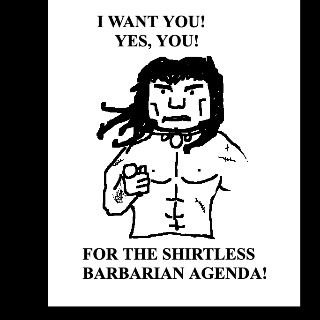I just bought several boxes of the WA French that I intend to paint as Senegalese Tirailleurs for Bolt Action. Does anyone know if they actually wore the red fez in battle in the 1940 campaign in France? My guess is that these were stowed away during combat, and used for parade and/light duty only. I have seen one photo of 8 prisoners where 5 have Adrian helmets and 3 are wearing the fez.
Senegalese Tirailleurs question
-
-
@Don Williams Yeah its like any other not helmet hat, inreality a german officer or british tank commander was issued a helmet but for table top people prefer the more astetically cool over the realistic which is totally fine.
-
Looking through various photos on google, it seems to match my experience with more contemporary soldiers... in the field and in combat individualism creeps in as Uniform regulations relax, so folks tend to wear what they are comfortable with... as much as their Senior NCOs and Officers allow. As the player you are the most influential NCO/Officer.
Edit: I was an Infantry NCO back in the 20th Century and that experience tends to influence my wargaming.
-
@Don Williams
Depends, if there was a shortage on helmets possibly either just because, battle moral (identifying your comrades) or to keep friendly fire down. Do what you want.
-
My understanding was that the fezzes had khaki covers for wear in the field, so they'd stand out less. Of course, though, standing out might well be something you want on the tabletop, so you do you.
-

-
There are 8 Senegalese Tirailleur prisoners in this photo. Five are wearing helmets, and three have the fezzes -- all of which appear to be dark colored (red) rather than light colored khaki.
-
That one in the front looks a bit like a beret worn in an unusual, individualistic manner rather than one of the actual fez style hats the other two have... and those two do not look identical to each other either. Lots of room for individuality expressed through uniform appearance once captured it would seem.
-
Reference the photo: I'm not convinced the middle Soldier is wearing a fez, nor am I convinced he's Senegalese.
-
That soldier in the middle could be North African or mixed race mulatto, but also keep in mind that the French referred to all Sub- Saharan Afican troops from their colonies as 'Senegalese.'
-
I've subsequently done some additional reading on this topic, as well as searching out images of these soldiers in the field/combat during the Battle of France (1940). Wearing the helmet was strictly enforced for all French troops in the field, and especially in combat. The fez (whether red or olive drab) was strictly for fatigue duty, or worn as part of an off-duty uniform.

-
@Don Williams
Thanks for following up and sharing this information.
-

-

-
Most of the surviving photos of these troops in the field in 1940 are propaganda pics taken by the Germans after these famously brave soldiers surrendered.
-
Some random thoughts generated by the POW pictures.
1. It's conventional wisdom that one should ditch your helmet if you're trying to surrender. The first few minutes at the point of capture are the most dangerous. A bare head makes you more of a human being that might be spared, a helmeted head a combatant.
Likewise one should loose fighting knives/bayonets (Oh, you wanted to stick ME with that), any enemy equipment/souvenirs, and sometime special uniform markings. (German POWs in WW2 were sometimes mistreated or executed for having cuff titles [even Heer] or sometimes even wearing black [captured Heer tankers mistaken for SS and shot.])
2. POWs are allowed to keep their protective equipment (like helmets) under the laws of land warfare.
-
Salut à tous,
As I am (sometimes) French, I allow myself to react to the first photo.
Objectively, it is difficult to identify exactly the rounded headgear worn by the two men. All black African soldiers in the corps of "les tirailleurs sénégalais" (armée coloniale) normally wore the great red "chéchia" in parade and outfit dress. In field dress, at rest or in march, it was covered with khaki canvass. But the "cadres" (officers and European NCO's and men wore "képis" or "bonnets de police").
I first thought of a North African type of "chéchia" : Maroccan, Tunisian and Algerian troopers, and European privates of the Armée d'Afrique, usually rolled up a "chèche" (white in parade dress, khaki or tan in field dress) around the red "chéchia". This "chéchia" covered with the "chèche" could be slighty different in each regiment, and the tightening could give this dome shape, in some case.
Do we have here reenlisted men ? Men attached to the "Tirailleurs sénégalais" as "cadres de terrain", and authorized to wear the headgear of their former regiment (but here without "chèche") ? Possible.
In Europe, the fighting units of "Tirailleurs sénégalais" were usually completed with specialists and mixed with artillery, reco' and other divisional units...
-
I did some more research and have a guess on this strange headgear... which is probably not a "béret" stricto sensu. I well know the "béret", because I am living in the area where this headgear is made and commonly worn in France (Pays Basque and Béarn, mountain-side).
The French army in 1939-40 wore only two types of "bérets" : a large blue one (mountain troops), and a narrower blue (mechanics and armoured troops) or khaki one (fortress infantry and artillery). At this time, the "béret" was never worn in this way... and nowadays, here and in Spain, it is never worn on this way.
The red wool "chéchia" (official name of the military fez) was made like a "béret", but higher, narrower and less flared. There were only two different types issued for all colonial troops : a scarlet red one for the "tirailleurs" and the "zouaves", and a dark red one with three black stripes for the "spahis". Both could, depending on the unit, receive a "pompon", a "chèche" or a khaki cover.
https://jenevoispaslerapoport.blogspot.com/2014/03/uniformes-et-equipements-de-larmee.html
What is my conclusion ?
This black - and brave - soldier of "la Coloniale" probably wears a real red "chéchia" of Senegalese private, but deformed by a prolonged wearing under the Adrian helmet (the damp wool, heated and compressed, has collapsed into this strange dome-headgear).
Certainly not the ultimate one, but that's my theory... Izan ontsa !
-
I end with this first photograph, which is very interesting from a uniformological point of view.
These two men, helmetless, show another detail that sets them apart from their companions : they are wearing the "paletot" (a tunic with two rows of buttons) under their open coat.
In 1939-40, in field uniform, the basic infantryman did not wear the tunic, but a shirt under the coat (and a tie for white men).
Members of "les Chasseurs alpins", members of "les Corps-francs" (commandos, raiders), fortress and campaign artillerymen, engineers, specialists (workers, mechanics), horsemen and mounted soldiers wore the tunic, without coat... as well as the tankers and soldiers in motorised units (still rare ; armored cars).
The black man is wearing the "paletot" of the Senegalese Corps (see the large yellow braid on the collar). The second one, of North African ethnic type, is wearing the "paletot" of the Colonial artillery (without braid). They apparently put on the coat, unbuttoned, at the time of capture.
So, they were probably not troopers of 1st line infantry, but African drivers, mechanics or "artilleurs de la Coloniale".
That's all for me... and with the uniform boards of the link (chéchias, chèches, bérets), we will be able to give the WGA Frenchies some style, not ?












